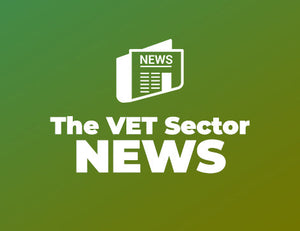
The Importance of Cloud Computing in Australian Vocational Education and Training
SUKH SANDHUCloud computing has revolutionised the way organisations store, access, and manage data. In recent years, the Australian Vocational Education and Training (VET) sector has begun to harness the power of cloud computing, transforming the way it delivers education and support services to students and businesses. This article will explore the importance of cloud computing in the Australian VET sector, discussing its benefits, challenges, and implications for the future of vocational education and training.
- Benefits of Cloud Computing for the VET Sector
1.1. Scalability and Flexibility
One of the most significant advantages of cloud computing is its ability to scale and adapt to changing needs. In the VET sector, this allows Registered Training Organizations (RTOs) to adjust their IT resources according to the number of students, courses, and locations they serve. This flexibility reduces the risk of over- or under-investing in infrastructure and ensures that resources are used efficiently.
1.2. Cost Savings
The adoption of cloud computing can lead to significant cost savings for RTOs. By outsourcing IT infrastructure and services to cloud providers, RTOs can eliminate the need for costly hardware, software, and maintenance. This shift to an operational expenditure (OpEx) model reduces upfront costs and allows RTOs to invest more in educational content and student support services.
1.3. Enhanced Collaboration and Accessibility
Cloud computing enables RTOs to offer students and staff seamless access to learning materials and tools from any location, on any device. This accessibility promotes collaboration and allows students to engage with course materials at their convenience, fostering a more student-centred learning experience.
1.4. Improved Security and Compliance
Cloud providers offer a range of security measures, including data encryption, secure access controls, and regular security audits. This enhanced security can help RTOs protect sensitive student data and comply with Australian privacy and data protection regulations.
1.5. Simplified IT Management
Relying on cloud-based services can simplify IT management for RTOs. By outsourcing IT infrastructure and services to cloud providers, RTOs can focus on their core mission of delivering high-quality education and training rather than managing complex IT systems.
- Challenges of Cloud Computing in the VET Sector
Despite its many benefits, cloud computing also presents several challenges for the VET sector.
2.1. Data Privacy and Security
As RTOs store more sensitive data in the cloud, concerns about data privacy and security become more prevalent. While cloud providers offer robust security measures, RTOs must also develop policies and procedures to protect student data and ensure compliance with Australian privacy and data protection regulations.
2.2. Integration with Existing Systems
Integrating cloud-based services with existing systems can be a complex and time-consuming process. RTOs must consider the compatibility of their current systems with cloud services and plan for the integration process carefully.
2.3. Reliability and Performance
RTOs must consider the reliability and performance of cloud services when selecting providers. Downtime and performance issues can negatively impact the student experience and the reputation of the RTO.
2.4. Training and Support
The adoption of cloud computing requires staff training to ensure that educators and administrators can effectively use the new tools and services. RTOs must invest in training and support to maximize the benefits of cloud computing.
- The Future of Cloud Computing in the Australian VET Sector
The growing adoption of cloud computing in the VET sector is expected to continue, driven by the increasing demand for flexible, cost-effective, and scalable IT solutions. In the future, cloud computing will likely play an even more significant role in the delivery and management of vocational education and training in Australia.
3.1. Increased Adoption of Cloud-Based Learning Management Systems
As the demand for online and blended learning continues to grow, we can expect more RTOs to adopt cloud-based Learning Management Systems (LMS). These platforms offer a centralised solution for managing course content, student records, and assessment data, simplifying administration and improving the student experience. Cloud-based LMS also enable RTOs to scale their offerings more efficiently and provide secure, remote access to learning materials for students and staff.
3.2. Enhanced Collaboration and Communication
The future of cloud computing in the VET sector will likely see increased use of collaboration and communication tools that connect students, trainers, and industry partners. Cloud-based applications such as video conferencing, document sharing, and project management platforms can enhance collaboration and engagement, leading to improved learning outcomes and stronger connections between RTOs and industry stakeholders.
3.3. Big Data and Analytics
The vast amounts of data generated by cloud-based systems offer significant opportunities for RTOs to leverage big data and analytics to improve their programs. By analysing patterns in student engagement, assessment results, and course completion rates, RTOs can identify areas for improvement and develop targeted interventions to support student success. This data-driven approach can also inform the development of new courses and learning materials that better align with industry needs and trends.
3.4. Personalised Learning Experiences
The future of cloud computing in the VET sector will likely involve more personalised learning experiences, enabled by adaptive learning technologies and artificial intelligence. By leveraging data on individual learners' progress, preferences, and needs, cloud-based systems can tailor content and support services to optimise each student's learning journey. This personalised approach can improve student engagement, motivation, and retention, ultimately leading to better learning outcomes.
3.5. Virtual and Augmented Reality
Advancements in virtual and augmented reality (VR/AR) technologies have the potential to transform the way vocational education and training is delivered. Cloud computing can enable RTOs to develop, deploy, and manage immersive VR/AR experiences that simulate real-world work environments and scenarios. These immersive learning experiences can enhance skills development and better prepare students for the workforce.
3.6. Integration of Internet of Things (IoT) Technologies
The Internet of Things (IoT) refers to the growing network of interconnected devices and sensors that collect and exchange data. In the VET sector, IoT technologies can be integrated with cloud-based systems to monitor and optimise learning environments, equipment, and student performance. For example, IoT devices can be used to track student progress in real-time, monitor equipment usage and maintenance needs, and gather data on environmental factors that may impact learning.
3.7. Increased Focus on Data Security and Privacy
As the use of cloud computing in the VET sector expands, so too will the need for robust data security and privacy measures. RTOs will need to invest in advanced security technologies, policies, and training to protect sensitive student data and comply with increasingly stringent privacy regulations.
3.8. Evolution of RTO Business Models
The adoption of cloud computing in the VET sector will likely drive changes in RTO business models, with a shift towards more flexible, on-demand education and training services. This transformation may include the development of new revenue streams, such as subscription-based course access, and partnerships with industry stakeholders to co-create and deliver targeted training programs.
The future of cloud computing in the Australian VET sector is bright, with significant potential for innovation and growth. As RTOs continue to adopt cloud-based technologies, they will be better equipped to deliver high-quality, flexible, and accessible vocational education and training to students and industry partners. However, it is essential that RTOs carefully navigate the challenges of data privacy, security, and integration to fully capitalize on the opportunities presented by cloud computing.
RECENT POSTS





